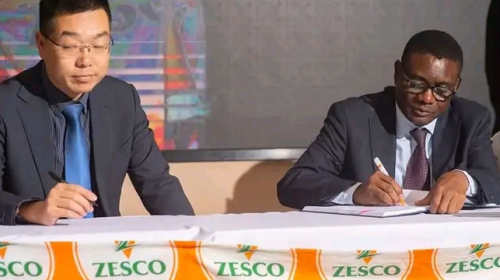Green energy transition presents ‘unparalleled’ opportunity for Zambia
The green energy transition presents an “unparalleled” opportunity for Zambia, but for it to work, the mining sector needs a fair, predictable and stable regulatory framework, law firm Herbert Smith Freehills partner and Africa co-chair Peter Leon said during an address at the Chatham House Conference, in Lusaka, Zambia, on March 30.
The administration of President Hakainde Hichilema has previously stated its intention to increase the country’s copper production from about 800 000 t/y to about three-million tons a year within the next decade to meet the surge in demand for materials that enable the green energy transition.
Mining is currently Zambia’s dominant industry, accounting for 10% of gross domestic product, more than 70% of foreign exchange earnings, 30% of government revenue and 8% of formal employment.
Despite the prominent role the mining sector plays in Zambia’s economy, to achieve the ambitious production targets, Leon believes Hichilema should seek to reinvigorate Zambia’s mining sector.
This would require increased production at existing mines and the establishment of new mines, which can only be achieved by attracting foreign investment back into the country.
Zambia is home to vast reserves of copper and cobalt and is the second-largest producer of copper in Africa, after the Democratic Republic of Congo.
Although copper and cobalt are both strategic metals which play an important role in the green energy transition, Zambia’s cobalt reserves remain largely unexplored and unexploited, principally owing to investor uncertainty, Leon explained.
“Green energy technologies require an enormous quantity of minerals to construct, including copper and cobalt. At this juncture, there is a two-thirds gap between current production rates and future demand for minerals needed for the green energy transition,” he pointed out.
Leon said the production of minerals such as graphite, lithium and cobalt could increase by nearly 500% by 2050 to meet the growing demand for clean energy technologies, while the demand for copper had resulted in an exponential price increase.
“Rapid growth in the Zambian mining sector cannot be achieved unless it is underpinned by a fair, predictable and stable regulatory framework which is implemented and administered by competent government officials in an open and transparent manner,” Leon enthused.
In addition, he said the regulatory framework and the manner in which it was administered would establish an investor-friendly business environment that would attract foreign direct investment and stimulate growth.
Zambia’s government has made some efforts to increase the attractiveness of its mining sector through fiscal incentives. For example, it reduced the corporate tax rate for all companies from 35% to 30% and it reintroduced the tax deductibility of mineral royalties against corporate income tax. This has undone the double taxation practice which was greatly affecting recapitalisation efforts, Leon said.
Moreover, the government announced that it intended to operationalise the Mining Appeals Tribunal, the aim of which was to enhance transparency and provide governance in dispute resolution.
However, Leon said these steps were not enough.
“Foreign investment – and therefore copper and cobalt production – will not increase unless the government reforms the mineral law regime to better accord with international best practice, and implements mechanisms to ensure that the law is administered in an efficient and effective manner,” he said.
Leon noted that the need to revise the mineral law framework to better accord with international best practice was emphasised when considering that, despite the introduction of business-friendly mining policies within the last year, copper output for the start of this year was weaker than production in the first quarter of 2021.
He indicated that the new mineral law framework should stipulate clear substantive and procedural requirements with which applications for reconnaissance, exploration or exploitation licences must comply to obtain a licence.
It should also limit the discretion afforded to government officials who must grant an application and issue a licence if an applicant complied with the procedural and substantive requirements imposed by the law.
Lastly, it should afford applicants a one-off opportunity to remedy any defects in an application, before the application is rejected.
“If Zambia followed suit, this may promote investment into expanding the production of existing mines, and the exploration, and subsequent establishment, of new mining operations,” Leon said.
By growing the mining sector in Zambia through the introduction of business-friendly policy and reforming the legislative and regulatory regime governing mining, Leon believes Zambia will increase investor confidence.
“Through such initiatives, Zambia could drastically grow its exports of minerals needed for the Green Energy Transition and, thereby, take advantage of this lucrative opportunity, which, in turn, could lead to a rapid growth of the Zambian economy,” Leon concluded.
![]()





